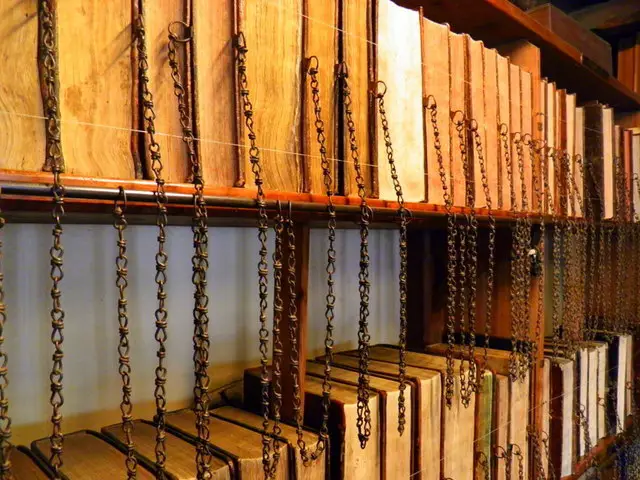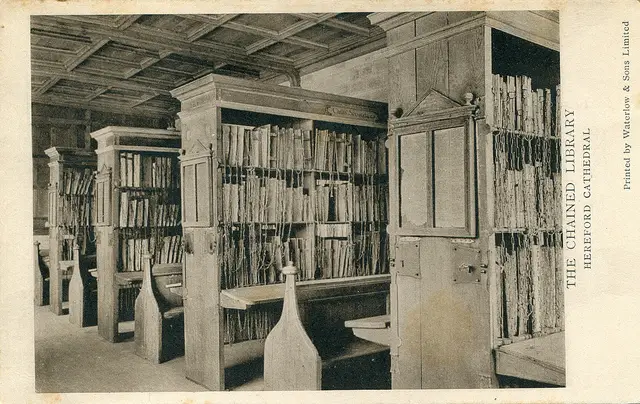
If you take a look at your bookshelf at home, or you’ve been to the library or bookstore recently, you’ll notice that the books are all shelved in a particular way. The books are usually standing up with the spines facing out and are packed closely together. This hasn’t always been the case, however. Hundreds of years ago, books were stored in an entirely different manner, and many even had a secure anti-theft device.
Before shelves had books, they were used to hold scrolls and later held a square manuscript made of folded sheets of paper or other material called a codex. The codex was the precursor to the modern book. The shelving of these items can be traced back to at least the first century BC, but the shelving of books with the spine facing out dates back to 1535 when the first spines with printing were placed on books.
Between the time when scrolls and the codex were placed on shelves, and the time when the spine of the book began to face out on a shelf, books were organized in every possible arrangement except with the spine out. They were placed horizontally, on the fore-edge (the edge opposite the spine), or were placed with the forage facing out.
Placing a book in this manner on a shelf had a drawback as the book couldn’t be identified. To rectify this problem, an identification for the book was scrolled across the fore-edge of the book on the pages. Books were also decorated ornately before the time of the printing press, and much of the work transcribing and binding books were done by monks in monasteries.
These manuscripts were considered expensive to make and were valuable, and because of this value, a unique security system developed in the Middle Ages in the monasteries. Books in the monastery were secured to a particular workspace with a chain where they could be used but not removed.
This system later spread to libraries where a book would be secured by a chain that was attached to the front cover. The chain would then run through a rod that ran the length of the bottom of the shelf and was secured with a lock. The books could be taken from the shelves and read at a desk, but the book couldn’t be removed from the bookcase, and more importantly, the library. To make it so the books wouldn’t get tangled in the chains, the books were shelved with the fore-edge facing out. The chain security system was used until the 18th century when books became more prevalent and cheaper to produce.
Several libraries around the world continue to showcase this system. One, in particular, is the Chained Library at Hereford Cathedral in the United Kingdom. It is the largest library in the world that still has all the chains, rods, and locks still intact. The Chained Library began in the 17th century and holds the Hereford Gospels, an 8th century illuminated manuscript, along with 229 other medieval manuscripts that are still chained to their shelves as they were when the library started.
Sources: Smithsonian, Time, The Paris Review, Hereford Cathedral, LA Times



